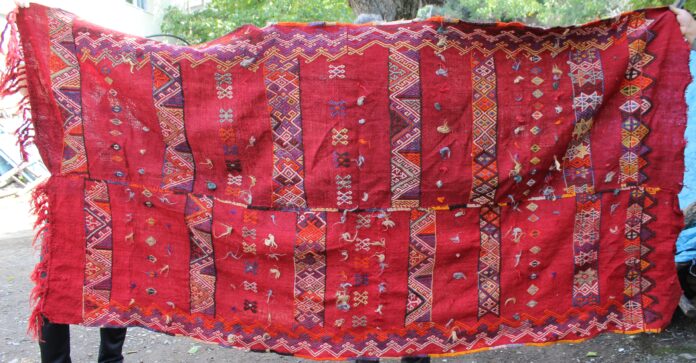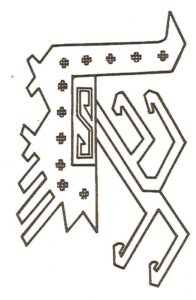FROM ALTAYLAR TO SAMSUN COMMON MOTIVES IN TURKISH WEAVINGS Elibelinde-Cot Horn-Card- Lighter / Hook (Shepherd’s Marrow, Flag) Lect. See. Coskun YANAR*
Turks made their weavings in aesthetic sensitivity by combining aesthetic expression with function. (Tural 1997). They reflected the aesthetic expression with the yanış (embroidery, motifs, decorations, etc.) in their weaving. The yanış, composition and aesthetic criteria that have been going on for centuries have been shaped in line with the beliefs of the society and have been the communication tool of aesthetic expression in the decorations in the Turkish ornament and weaving arts without much change. (Karamağaralı 1997) At the same time, the burns in Turkish weaving are important elements that reflect the culture of the society.
The burns in Turkish weavings contain symbolic expressions. Symbolic expression is not the transfer of the effects taken from any entity, the information about the entity as it is, but the transfer of it with symbols, signs and images that will remind it. Symbol is defined as the use of intermediaries to announce, think, or imagine an entity or its effect, reminding it by replacing the main item, expressing the main item by evoking it, communicating with signs and images. (Tural 1998; Ateş 1996).
The elements that make up the decoration in Anatolian weavings are given names such as yanış, yangış, yaneş embroidery, nanış, embroidery, example, decoration, model, motif (Deniz 1998; Görgünay 2002). In our study, we will try to use the wrong name from these nomenclature.
In Turkish arts, flames are brought together in different orders and techniques to form patterns and compositions. The lights in the compositions reflect a certain emotion, a thought. In this respect, we can search for the semantic content and depth of meaning of Turkish weaving arts in the weavings and the meanings of the illusions. For this, it is necessary to know the meanings, implicit expressions and origins of burns well. In this context, the origin, implicit expressions, meanings and messages of the lies constitute important building blocks in Turkish societies. Yanış (yangış, yaneş embroidery, nanış, embroidery, example, decoration, model, motif) in works that show the unity of society, unity togetherness, self-recognition. It sheds light on the fashion in history. It shows respect to history to those who want to learn.It shows how rich we are the heirs of a culture to those who can read…
Certain value concepts of nomadic and settled societies developed within the framework of “sacredness, fertility and abundance”. It is seen that these concepts have also developed in the form of “holiness, warlikeness and abundance” in Turks. Protecting human existence due to wars, preserving animal existence due to geographical conditions, reproduction of society, abundance of human and animal numbers and fertility have been the most basic goals of society. (Fire 1996). Some of the yanış in weaving are among the symbolic fictions developed in this context. Burns are symbolized by the continuation of the generation, the reproduction of animals and plants, birth and reproduction, abundance and fertility. These symbolic shapes appear as incantations (embroidery, motifs) from the past to the present.The common mistakes in the weaving of Turkish communities who lived in different places and times and the similarities in these yanış show the unity of culture and style in Turkish arts from the past to the present.
Elibelinde: It is a fire that symbolizes femininity, maternity, fertility, reproduction, good luck, fertility, fortune, happiness and joy. (Erbek 2002). They are symbols of women’s fertility, pregnancy, birth and postpartum phenomena in various forms. (Fire 1996). There are different forms and interpretations of this yanış for girls and for married women. In the meanings of elibelinde yanış, girl yanış, newly married girl, bride, married woman yanış (Durul 1987) in the weavings of different regions of Anatolia, elibelinde yanış was created with small details without changing the main form of the yanış. The meanings and interpretations of these created combustions have been named without changing their essence. (Photo 1,2,3,4,5,6,7, drawing 1,2,3,4,5).
Coach horn: It has been widely used in weaving arts as a symbol of fertility, productivity, heroism, power, strength, masculinity, happiness, health and happiness (Ateş 1996; Erbek 2002; Tanrısal 1997). It is known as coach horn yanış, coach horn embroidery, coach in the region. There are similarities between the yanış of ram horns in local weavings and the yanış of ram horns in other regions of Anatolia. (Photo 8.9, drawing 6).
Chest: It contains meanings such as expectation of marriage, marriage, dowry, dowry chest, child wish, birth, reproduction, continuity of generation. In some societies, it has also been used as a symbol of death in these meanings. (Ateş 1996; Erbek 2002) It is called “chest yanış/embroidery, comb yanış/embroidery” in the region. The chest burn seen in the weavings in the region is in the form of a square and forms an outward protrusion in the form of comb teeth on the lower and upper edges. This yanış was mostly used in plain weavings.
There are different compositions of chest yanış in the weavings of the region. In some weavings, as the main yanış of the weaving, it has created the decoration on the entire surface of the weaving. (Photo 10.11). In some weavings, it is used as intermediate yanış, in belts or interspersed in between. A rich composition is created by weaving the yanks in different colors on the weaving surface. (Drawing 7).
Hook/lighter/shepherd’s marrow/geydirme (keydirme): It was used in weaving and other handicrafts in almost all regions of Anatolia. It is also used as the stamp of Sarıkeçili Turkmens in Niğde Region. (Kırzioglu 2001). In addition to its meanings related to protection, it also symbolizes opposite and different concepts such as feminine masculine, male and female, wind and water. (Erbek 2002). This yanış is known as shepherd’s marrow yanış, shepherd’s marrow embroidery and lighter yanış, lighter embroidery in Vezirköprü region. It is generally used as intermediate yanış in weaving. Yanış known as geydirme and keydirme in the region was formed from hook/lighter/yanış. The same fire is known as the flag yanış (Kurt 2021) in the Yörükler village of Samsun Ondokuz Mayıs district.It was used as the main yanış in weavings known as Geydirme (keydirme). (Photo 12,13,14,15 drawing 8.9).
Lighter/hook/shepherd’s marrow yanış is very similar to the “S” yanış in the Pazirik horse cover (Tekçe 1993) (Drawing 10), and the animal figure in the 15th century Konya animal carpet (Aslanapa 1987) with the filling yanış in (Drawing 11). However, the similarities with the yanış of lighters in different weaving and handicrafts in different regions in Anatolia (Kırzıoğlu 2001) draw attention. (Photo 16) The yanış we compared and the lighter/hook/shepherd’s marrow yanış in the region are important in terms of showing their origins and used in Turkish art from past to present.
References
Aslanapa, O. 1987, Thousand Years of Turkish Carpet Art, Eren Publishing and Kitapçılık Ltd. Sti., Istanbul. Fire, M. 1996, Mythologies, Symbols and Carpets, Net Turistik Publications, Istanbul. Deniz, B. 1998, Ayvacık (Çanakkale) Region Plain Weaving Sheets (Kili-Cicim-Zili), Ankara. Görgünay, N. 2002, Oguz Stamps and Traces of Göktürk Letters in Our Handicrafts, Ministry of Culture Publications, Ankara. Erbek, M. 2002. Anatolian Motifs from Çatalhöyük to the Present, Ministry of Culture Publications, Ankara. Karamağaralı, B. 1997, “On the Interpretation of Motifs in Turkish Carpet Art”, Arış, 3, 28-39. Kırzıoğlu, NG 2001, Common Mistakes in the Turkish World from the Altays to the Danube, Ministry of Culture Publications, Ankara. Kurt, H. 2021, The Last Nomads of the Black Sea, Samsun Yoruks, Ayata Book, Ankara. Godly, M. 1997.“The Language of Turkish and Navaho Carpets”, Arış, 1, 94-107. Tekçe, EF 1993, The Story of a Carpet from Pazirik Altay, Ministry of Culture Publications, Ankara. Tural S. 1997, “Aesthetic Sensitivity in Weaving”, Arış, 1, 4-9. Tural, S. 1998, “A Special Indicator of Carpet’s Function”, Arış, 4, 8-21. Durul, Y. 1987, Turkish Rug Motifs, Turkish Culture Research Institute Publications, Ankara. *Lecturer, Ondokuz Mayıs University, Samsun Vocational School, Samsun/Turkey.Samsun Vocational School, Samsun/Turkey.Samsun Vocational School, Samsun/Turkey.
E-mail:[email protected] ORCCID ID: 0000-0002-4989-1858 **
“This study was supported by Ondokuz Mayıs University with project number PYO.ILH.1904.20.002” A
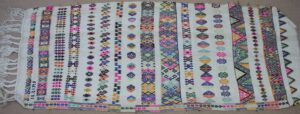
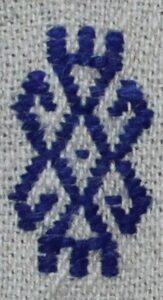
Drawing 1: Elibelinde Yanış

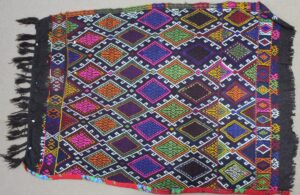
Photograph 3: With Prayer/Prayer. In weaving, a floor decoration was created with the yanış of the elibelinde. A footrest was created with a different elibelinde burn. Özyörük/Vezirköprü/Samsun
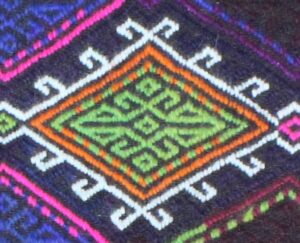
Drawing 2: Yanış Elibelinde

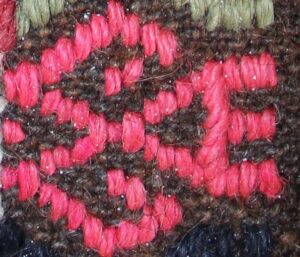
Drawing 3: Elibelinde Yanış

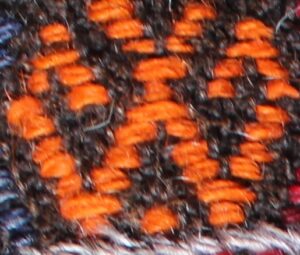
Illustration 4: Yanış Elibelinde
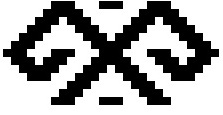
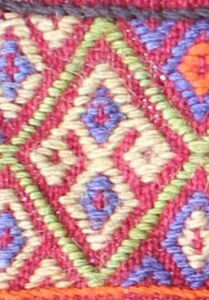
Illustration 5: Elibelinde Yanış
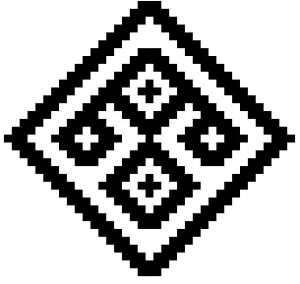
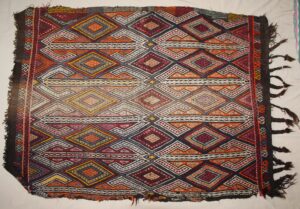

Illustration 6: Ram’s Horn Yanış Detail
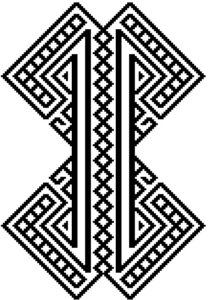
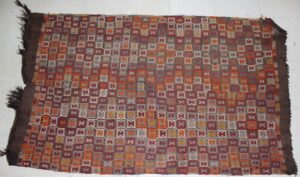
Photo 10: Palisade with chest burner. In weaving, floor decoration was created with chest / comb burns. Özyörük/Vezirköprü/Samsun.
Illustration 10: Horse cover on the Pazirik carpet, (Tekçe 1993, 142)
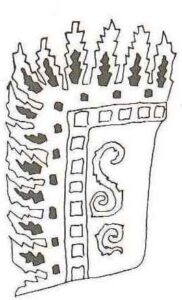
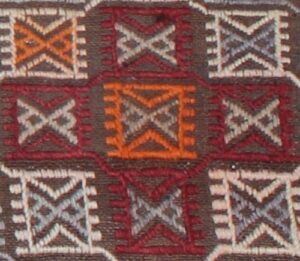
Photograph 11: Crate Yanış Detail Drawing 7: Crate/comb Yanış Drawing 6: Coach Horn Yanış Detail
Illustration 7: Crate/comb Yanış

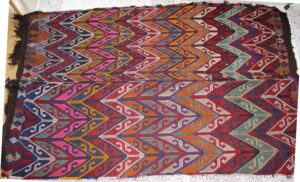

Illustration 8: Lighter/ hook/shepherd’s marrow trim/flag burn
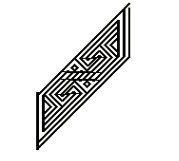
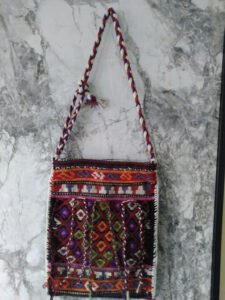

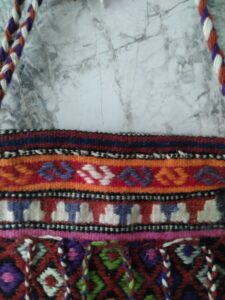
Photo 15: Lighter/hook/shepherd’s buttonhole Detail

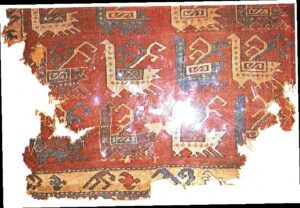
Photograph 16: Rooster figured carpet, 15th century. (Aslanapa 1987, 56). Drawing 11: Figure drawing from Konya animal carpet, 15th century. (Aslanapa 1987 46)
Drawing 11: Figure drawing from Konya animal carpet, 15th century. (Aslanapa 1987 46)

